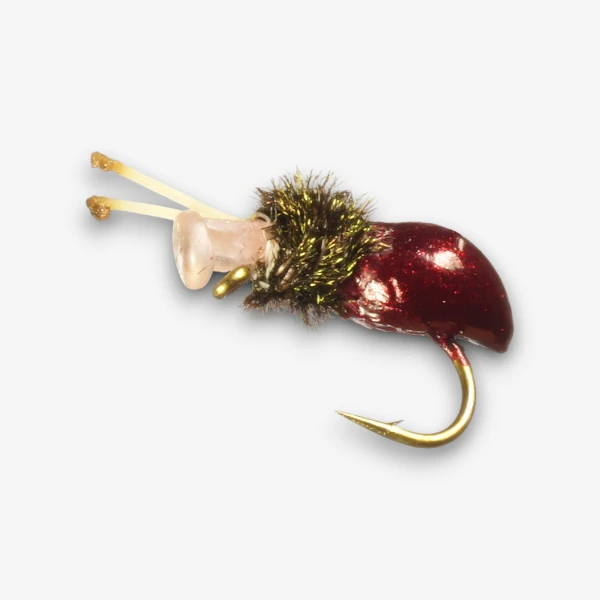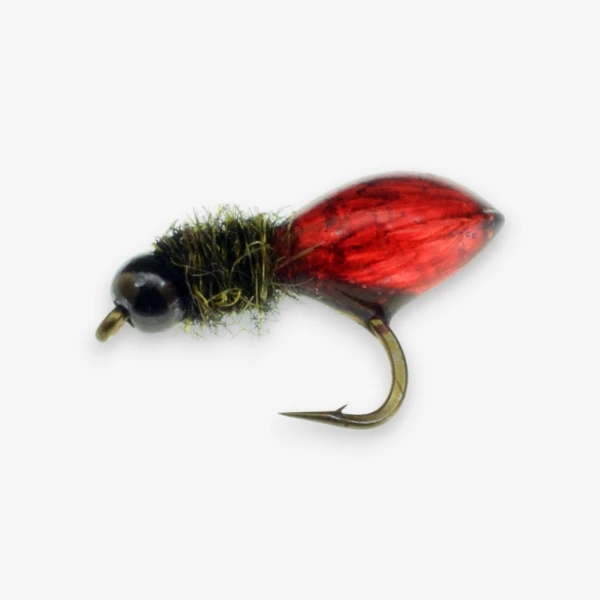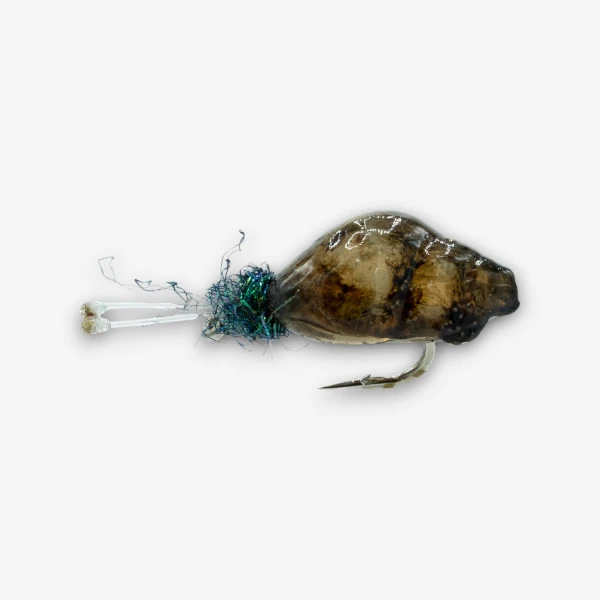Snails
Description
Overview: Snails (class Gastropoda) are mollusks that can be found in a variety of aquatic habitats, including ponds, lakes, rivers, and streams. While not as common a food source for fish as insects, snails are still an important part of the aquatic food web, particularly for bottom-feeding species like trout and bass. Snails typically have a coiled, hard shell, which can range in color from brown, green, or tan to bright yellow, depending on the species and habitat. The body of the snail is soft and can vary in color, typically translucent or light brown. Snails move slowly across the substrate using their muscular foot, which can sometimes be seen near the water’s surface when disturbed. Their slow movement makes them an easy target for fish, particularly when they are dislodged or drifting in currents. Snail imitations in fly fishing are usually tied to replicate their shape and movement. Common hook sizes for snail patterns range from 10 to 14.
Nymph/Drowned: Snails do not have a traditional nymph stage like insects but are often imitated in their drowned form when they are dislodged from their submerged habitat or swept by currents. Snails in the water have a soft, gelatinous body with a spiral-shaped shell, which is sometimes slightly cracked or broken when the snail is disturbed. A snail imitation typically consists of a soft, rounded body with a shell made from materials like foam or hard plastic, and the fly often includes a weighted component to help it sink. Hook sizes for snail patterns are generally between 10 and 14, depending on the size of the snail being imitated.
Dry/Adult: Snails are primarily bottom-dwelling creatures, and while they don’t have a true "adult" stage above the water like insects, they can occasionally be seen near the water's surface. Snail patterns, when fished dry, are typically fished when the snail is on the surface after being disturbed or dislodged. These flies are generally imitative of the snail’s shell and soft body, often appearing as a floating or half-submerged object. The most common hook sizes for snail imitations range from 10 to 14, with patterns that simulate their slow-moving, drifty appearance on the surface.


